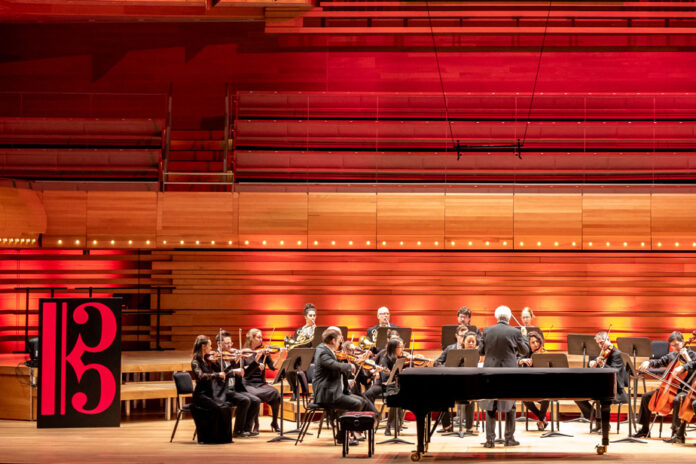The Bach Festival, which this year offers a dozen concerts until December 3, got underway on Friday evening at the Maison symphonique with four rarely performed works by two of the sons of the Leipzig Cantor. With Reinhard Goebel at the head of the Festival Orchestra, we couldn’t have dreamed of a better guide to guide us through these little-known pages.
The director and founder of the organization Alexandra Scheibler wisely recalled at the start of the evening the long-term association of the German chef with the festival, which inaugurated its first edition in 2005.
His presence in Montreal was welcome after the disappointment following the cancellation of the pre-opening concert which should have featured another great Bach specialist, John Eliot Gardiner, who temporarily ceased his activities following an altercation with a singer .
The fact remains that the concert, whose soloist was the German pianist Schaghajegh Nosrati, was less likely to attract crowds than the last two editions, which had been inaugurated with great choral works by Johann Sebastian Bach.
The audience – perhaps half of the Maison symphonique – included few familiar faces, which resulted in applause after each of the 13 symphony or concerto movements on the program.
The two works by Johann Christian Bach which formed the first part call for contrasting judgments. Probably the best known, with Carl Philipp Emanuel, of the sons of Johann Sebastian, Johann Christian, who maintained warm ties with the young Mozart, is distinguished by his cosmopolitanism (he spent a long time in Milan and London) and his gallant style .
The first score, the Symphony in G minor, Op. 6 no 6, his most unique orchestral work, nevertheless excellently sets the table in a typically Sturm und Drang atmosphere (pre-romantic movement of the 1770s). We are surprised to find a slow movement in minor, while the major mode is generally the rule.
Arriving on stage in a rush with his bow tie and red socks, the lively Reinhard Goebel barely has time to arrive at the lectern before he gives the start signal to the twenty or so musicians. Everything is skillfully highlighted with commendable attention to detail.
The Piano Concerto in E flat which follows is much less satisfying, with its stereotypical formulas, despite the involvement of the pianist on her large Steinway. The only originality to note: a few pizzicato passages in the orchestra.
But the return from intermission would fortunately transport us elsewhere. Three years older than Johann Christian, Johann Christoph Friedrich had a much more discreet existence, having worked for more than 40 years at the court of Bückeburg, a small town in Lower Saxony.
The use of the term “concerto grosso”, largely obsolete at the time (it was 1792), was already original. The first theme of the initial movement is well drawn and the central movement, in minor, develops a magnificent theme in Sicilian rhythm, with evocative alternations between major and minor modes. Nosrati is impeccable, maintaining constant communication with the orchestra, despite the telephone ringing that was heard in the hall towards the end of the concerto.
The last work on the program, the Symphony in B flat major (1794), is no less fascinating with its piccolo part, its brief double bass solo and its tasty modulations. The program, which only announced three of the four movements, wrongly made us applaud before the delicious rondo, full of humor with its wind projections at the end.















